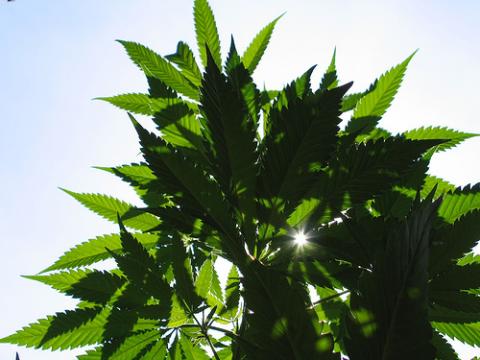Cannabinoids 'a buffer against stress and pain'

New research from the Centre for Pain Research at NUI Galway highlights the importance of marijuana-like chemicals in suppressing pain. By John Holden.
The effects of smoking weed vary from person to person. For some it’s the perfect relaxant at the end of a long day. For others, marijuana can in fact cause anxiety and stress.
Its effects will vary depending on an individual’s own personality and make-up. However, the active ingredient in marijuana, Tetrahydrocannabinol (THC), doesn’t change.
We now know that there are naturally occurring ‘endocannabinoids’ found in the human brain and spinal cord.
“We’ve known about the existence of naturally occurring endocannabinoids since the mid to late 90s,” explains Dr David Finn, Co-Director of the Centre for Pain Research at NUI Galway. “They seem to act to suppress and dampen down pain, and potentially anxiety and stress. You could almost describe them as a system designed for restoring homeostasis – a buffer against stress and pain.”
The body responds to pain by elevating our levels of endocannabinoids, which stimulate the CB1 cannabinoid receptor. This, in turn, has the effect of suppressing pain.
“It’s actually been an active area of research over the last fifteen years,” says Finn. “We’ve come across a range of indications of its existence in a number of disorders - from pain, to psychiatrics, cancer and obesity.”
However, Finn, along with Dr Gemma Ford and a team of researchers have shown for the first time that the hippocampus of the brain, (usually associated with memory and learning), has an active role to play in suppressing pain during times of stress.
“When in a stressful situation, the synthesis of these endocannabinoids increases in key brain regions, including the hippocampus,” says Finn.
“The research, which was funded by a grant from Science Foundation Ireland, advances our fundamental understanding of the neurobiology of pain and may facilitate the identification of new therapeutic targets for the treatment of pain and anxiety disorders.”
Both forms of THC - marijuana and the naturally occurring kind - activate the same targets in the brain.
“When someone smokes a joint they’re inhaling lots of compounds, one of which is THC,” says Finn. “It works on the same protein that the body’s own endogenous compounds respond to. However, the endogenous molecules work more subtly than marijuana. So if we could target the body’s own ‘cannabinoids’, we could achieve the same kind of relief brought on by marijuana with fewer of the side effects.”
Image top: Lollyman.
